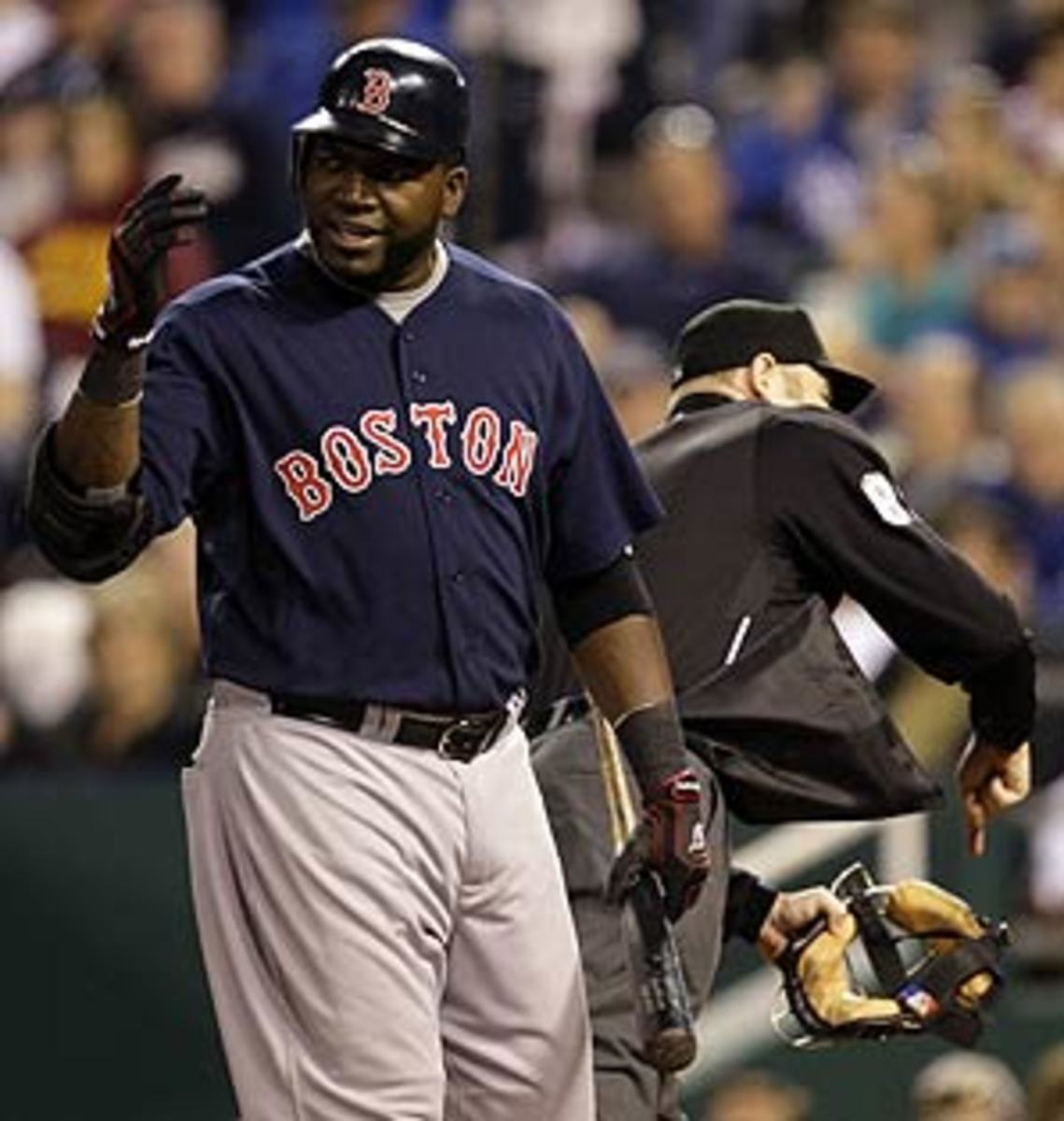For slumping Ortiz, Soriano and Burrell, it's getting late early
The chart at right shows just how bad Ortiz, Soriano and Burrell have been so far this season.
Again, it's too early to make a definitive call on any of them, but the warning signs are ominous. Ortiz, 34, hit .238 last year. Soriano, 34, hit .241 and has missed almost 100 games combined over the past two seasons. Burrell, 33, hit .221 last year. All of them are smack in the crosshairs of the two fastest-growing influences these days in how players are quickly devalued: age and lack of defensive skills.
Moreover, Francona, Piniella and Maddon have the same forces working upon them that lend urgency to making a call on their aging sluggers: They manage contending teams that can't afford to lose ground early to a strong defending division champ, and they have other options already in hand.
Francona, for instance, could give some of the lefty-swinging Ortiz's at-bats to righty Mike Lowell, as he did on Thursday against a tough left-hander, Francisco Liriano, and to Victor Martinez when he needs a day off from catching. But when outfielders Mike Cameron and Jacoby Ellsbury are healthy, he also has lefty Jeremy Hermida to replace Ortiz. Big Papi was hitting .188 as late as June 5 last year -- 55 games into the season, of which he played in 49. Ortiz won't get that length of rope this year.
Piniella could give more at-bats to rookie Tyler Colvin, who needs to start more than once a week. And every time Maddon sticks with Burrell he essentially is taking at-bats away from up-and-comers Sean Rodriguez, Reid Brignac and others.
Each decision also carries unique pressures for the manager to consider. For Francona, Ortiz is a Boston icon and a tremendous clubhouse influence, and the manager risks losing the player and his voice if he gives up on him. For Piniella, the pressure is the reality that the Cubs still have four years and $72 million remaining on Soriano's contract after this year. And for Maddon, it is knowing that the Rays have 13 percent of their payroll tied up in Burrell, who makes $9 million.
Of course, there is one possibility that each manager is rooting for to make his job much easier: that these aging sluggers begin to hit again -- and soon.
On Aug. 17, 2007, the Cubs signed Carlos Zambrano to a five-year, $91.5-million extension that to this day makes him the fifth-highest-paid pitcher in baseball history (on an average annual value basis). Zambrano was 26 years old at the time, three months away from free agency, and sported a career ERA of 3.37. Chicago general manager Jim Hendry said at the time of the signing, "We certainly expect him to be a No. 1 starter, and he's hitting the age where he's going to be better."
Uh, mark that down as an 0-for-2. Since signing the contract, Zambrano has pitched like a No. 3 starter and has been appreciably worse than before the extension, pitching to a 4.06 ERA. Where is the growth? On Thursday, Zambrano pitched one of his too-frequent untidy games, lasting just five innings against Milwaukee, but long enough to give up eight hits, walk three batters, throw two wild pitches and log 121 pitches overall. It was the first time in three years that a major league pitcher threw 120 pitches without getting past the fifth inning.
Forget about an ace. As the chart below shows, Zambrano is the third-best pitcher on his own team, providing fewer wins, innings and quality than Ted Lilly and Ryan Dempster since Aug. 17, 2007. His work in that time has been most similar to guys such as Joel Pineiro, Ervin Santana, Randy Wolf and Kyle Lohse, none of whom are considered anything close to $18.3 million-a-year pitchers. Here are the numbers since Zambrano struck it rich:
Within three days this week, the Orioles, Indians and Blue Jays all drew the smallest crowds in the history of their current ballparks. It was a cold reminder that the halo effect of a beautiful new ballpark, like the smell of a new car, is not a lasting one.
Toronto's Rogers Centre (nee Skydome), which opened in 1989, was an architectural marvel and tourist attraction unto itself. Baltimore's Camden Yards, which opened in 1992, began the retro-ballpark building boom. And Cleveland's Progressive Field (nee Jacobs Field) was the template of how a ballpark could be the economic and emotional engine of a downtown revival.
Back in 1995, even after the ill will of the two-year players' strike, you could have found no better baseball cities than Baltimore, Cleveland and Toronto. They ranked 1-2-3, respectively, in AL attendance. By last season, they had plummeted to 13-9-12, respectively, and this season shared the ignominy of sinking to rock bottom in their ballparks' history in the same week.





